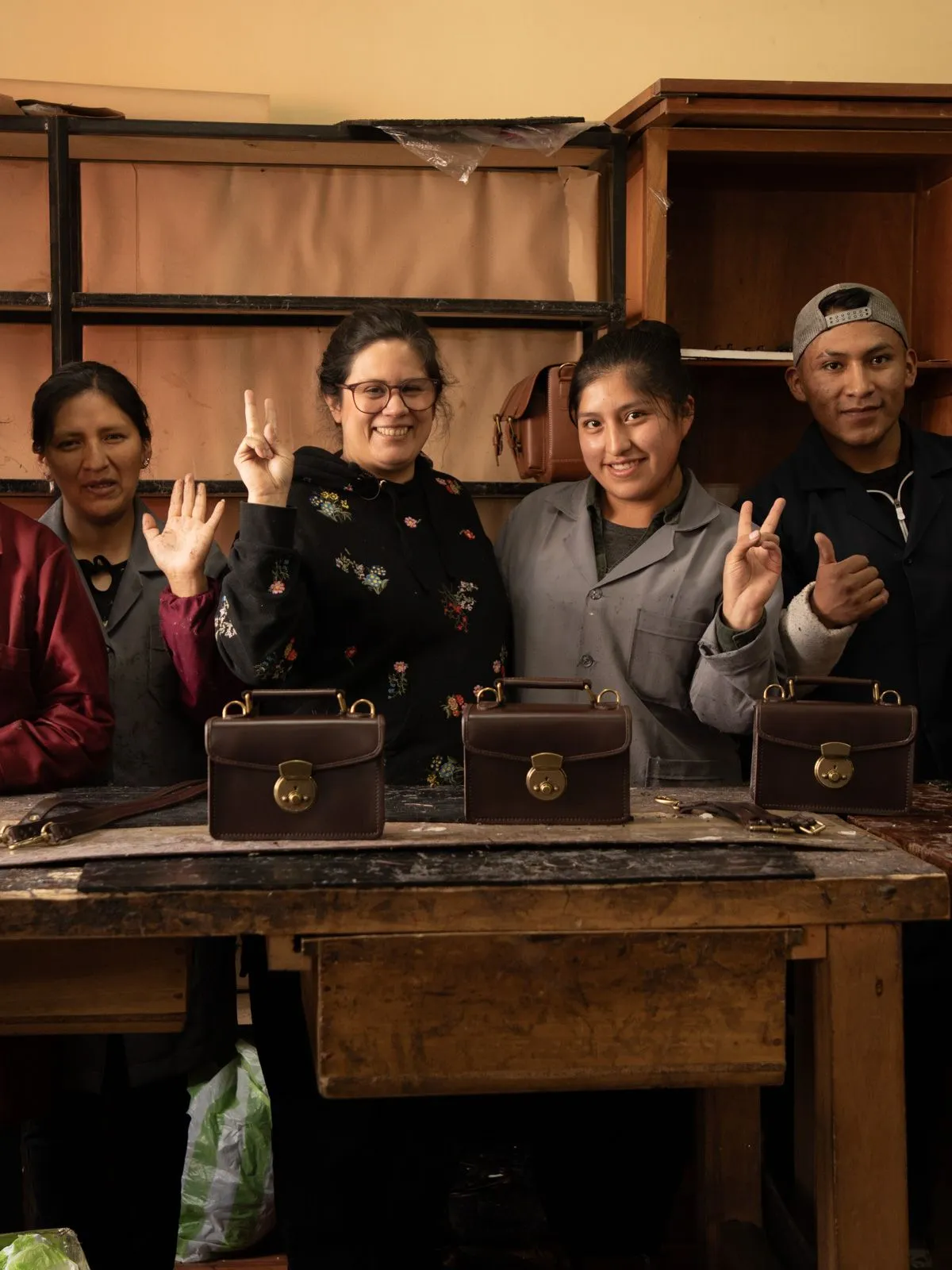Free UK shipping. Free international shipping over £500.
Behind the Scenes
At Beara Beara, every bag tells a story—one that begins in the heart of Bolivia, where skilled artisans bring our designs to life. We’d love to take you behind the scenes to show you the craftsmanship and dedication that goes into creating each Beara Beara.


Q1: How important is stitching in the process and how do we do it?
Sewing leather bags is a specialised craft that demands skill, precision, and a deep understanding of the material. While leather is strong and durable, its longevity heavily relies on the quality of the stitching. Poor stitching can cause seams to split, handles to detach, and the bag's structure to weaken over time. High-quality stitching, using strong threads like polyester or nylon, resists wear and tear. Reinforced seams and double stitching in stress-prone areas, such as handles and corners, ensure the bag remains durable and intact, even with heavy use.
Q2: How do we maintain the shape & structure of the bag?
It’s essential that our bags maintain their structure and integrity throughout their lifetime. We use thick natural leather, reinforced with inner supports to ensure key sections retain their rigidity over time. Depending on the area and level of support required, we utilise five different thicknesses of these reinforcing materials.
Q3: What process do we think needs some improvement?
We’ve recently invested in new machinery to improve our production process, including a leather thinning machine that helps us adjust the thickness of hides based on the section’s flexibility or the support needed, ranging from 3 to 8 millimetres. Another addition is a rotating arm machine, allowing for smoother stitching around rounded corners. This intricate skill, which traditionally takes years to master, is now made easier and more efficient with the help of this advanced equipment.
Q4: How long does it take to create 1 bag?
The number of components varies by bag style. For example, the Eden bag consists of around 8 leather pieces, 7 lining sections, and 5 hardware pieces, while the Will backpack has over 40 leather pieces, 20 lining sections, and 25 hardware components. We produce our bags in small batches; for instance, crafting 50 Manjus takes the team around 4 days, from leather selection to final touches before shipping.
Q5: Which bag is the most difficult to create & why?
The larger and more intricate the bag, the more skill and experience are required to make it. Structure also plays a big role in complexity. Our backpacks, like the Will, Murphy, and Jacqueline, take the longest to produce. Even slight changes in leather rigidity—due to factors like climate or the cow's diet—can affect the final result, requiring our artisans to adjust their process as they go.
Q6: How long is the training process for the employees in Bolivia?
The learning process starts on day one, with workers training while performing their tasks. Initially, they focus on basic activities like using tools and executing simple pre-assembly tasks. After about one month, they handle tasks like leather bending and reinforcement placement. By three months, they can assemble pockets and zippers. After six months, they are skilled in complex tasks and ready to train others.
Q7: Who is the youngest and oldest worker?
Verónica is 23 years old and a single mother of a 4-year-old. Cheerful and quick to learn, she enjoys playing football and visiting her grandparents’ village to care for their llamas and sheep.
Rogger ( Marco) is 49 years old. He used to be a policeman and is passionate about football and movies. Known for his resilience and leadership, Rogger is always ready to support his coworkers.
Q8: Do you have a consistent playlist in the factory and what is it?
The local radio, featuring mainly cumbia music, is popular in the workshop. Cumbia, with its blend of Indigenous, African, and European influences, expresses daily experiences through themes of love, heartbreak, joy, and social issues. They also enjoy folk rhythms like huaynos, morenadas, and cuecas, which reflect Bolivia’s rich cultural diversity and serve as a symbol of identity and national pride.

